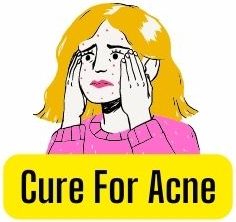
Can a tanning bed help with acne? It depends. The tanning bed’s ultraviolet rays are harmful to the skin, and they also cause sunburn and dryness. However, many acne patients use topical treatments and medications that make them more susceptible to the effects of the sun. As such, it’s important for patients to use a high-SPF sunscreen when going out in the sun.
UV rays from tanning beds damage elastin and collagen
The sun’s UV rays cause damage to collagen and elastin in the skin. This radiation penetrates the middle layer of the skin, where the elastin and collagen are stored. Over time, this buildup causes the body to produce enzymes that break down the collagen and elastin. The further exposure to UV rays accelerates the breakdown process, leading to premature wrinkling and sagging.
The UV rays from tanning beds also affect the eyes. They contain more than 100 times the UV levels of sunlight. UVA rays cause cataracts and ocular melanomas, and can also increase the risk of macular degeneration. Tanning beds also cause a reduction in the immune system, making it less capable of fighting off the common cold, as well as more serious illnesses.
However, many experts argue that moderate sun exposure can have other health benefits. Some studies have found that moderate exposure to the sun has positive effects on the immune system, mood, and weight loss. It has also been shown to improve lifespan. The amount of sunlight required to obtain a healthy dose of Vitamin D is usually around 10 to 20 minutes per day in the spring and summer. In comparison, it takes two hours for a person to get enough Vitamin D from the sun.
Exposure to UV rays from tanning beds can cause skin cancer. It is especially dangerous to individuals under 30 years of age, so it is recommended to use a sunless tanning lotion instead. Avoiding the sun is the best way to protect your skin from photoaging. Remember that the sun’s UV rays are strongest between 10 am and 4 pm. So, avoid tanning beds during this time.
They increase risk of skin cancer
There’s a strong link between using tanning beds and skin cancer. In one study, those who used tanning beds between high school and college were more likely to develop skin cancer. While the association is stronger for people who were younger at the time, it’s important to note that there is no clear link between the two. Researchers have yet to discover the exact mechanism behind the increased risk of skin cancer. However, they have identified three possible pathways that may increase the risk of developing the disease.
There is a direct link between tanning bed use and skin cancer, and this may not be apparent at first glance. According to a study published in the journal Dermatol Surg, people who used tanning beds at least four times a year between high school and college had more skin cancer. In addition, those who used tanning beds had more sunburns between ages 15 and 20 years old. Interestingly, the association between tanning bed use and skin cancer was similar for men and women, regardless of sex.
The main risk is that UVA rays penetrate deeper into the skin than the rays of the UVB spectra. Tanning beds expose people to higher levels of UVA compared to natural sunlight. Unlike the sun, tanning beds’ bulbs don’t produce enough vitamin D to protect our skin from UVB radiation. Therefore, a healthy diet and vitamin supplements are recommended to reduce the risk of developing skin cancer.
Studies have found that the frequency of use of tanning beds increases the risk of developing melanoma by 75%. In addition, women who use tanning beds for more than once a year have a six-fold greater risk of developing the cancer than those who do not. Therefore, people under the age of 35 should avoid indoor tanning if possible to reduce their risk of developing melanoma.
Researchers have discovered that tanning beds pose a greater risk of skin cancer than regular sunlight. Studies show that UVA rays, which cause melanoma, damage DNA in skin cells. The DNA damage leads to the development of abnormal cells. The use of tanning beds is also associated with increased rates of basal and squamous cells. According to the World Health Organization, exposure to tanning beds increases the risk of cancer. Therefore, people should always wear protective eye coverings while tanning.
They cause sunburn
If you plan to spend time in a tanning bed, remember to protect yourself from the sun’s rays with a hat, scarf or sunglasses. Also, wear sunscreen. The sun’s rays penetrate clouds, so you may still be exposed even if you’re under an umbrella or a canopy. Remember to reapply every two hours and wear sunglasses or other protective clothing. If you’re not sure how much sunscreen to wear, consult a dermatologist.
There are many risks associated with the sun and tanning beds. The UV rays emitted by tanning beds are three to six times stronger than those emitted by natural sunlight. Studies have shown that exposure to these harsh rays can lead to skin damage, such as melanoma. These risks are even greater for severe burns that blister. Wearing sunscreen and protective clothing are the best ways to protect your skin from sun damage.
Research has shown that tanning causes a higher risk of skin cancer, especially among young people. Exposure to ultraviolet radiation can cause premature aging of the skin, which can result in a number of serious diseases, such as melanoma. In fact, it’s estimated that more than half of all people who spend time in tanning beds will develop some form of skin cancer. It’s important to remember that skin cancer is rare, but the risk is still higher than that of exposure to natural sunlight.
Although sunburn can result in a permanent color change, it’s important to remember that UV radiation is one of the main causes of skin cancer. In addition to sunburn, UV radiation also causes skin aging. While sunburn can cause wrinkles, tanning beds also result in a permanent tan. In addition, tanners need to apply sunscreen when they are outside in order to protect their skin.
Tanning beds also damage skin DNA, which increases the risk of skin cancer. Those with fair skin should avoid tanning beds during the winter months as this is not the best way to produce vitamin D. As a rule, tanning beds do not contain vitamin D, so taking a vitamin supplement is recommended. Moreover, it is illegal for children under the age of 18 to use a sunbed. Therefore, anyone running a tanning business must also not provide tanning services to underage people.
They cause dry skin
The same type of UV light that a sunbed produces is also used by tanning beds. Regardless of the source, our skin reacts to light the same way. Light therapy machines deliver this type of light to the skin. This light may help treat acne, but it can also damage your skin and cause acne. For this reason, many dermatologists recommend that people avoid tanning beds in winter. But what are the possible causes of dry skin and acne?
First of all, tanning does not treat acne. However, sun tanning can trigger your skin to produce more oil, which in turn can lead to bigger acne breakouts. Another risk of skin damage is sunburn. It can cause premature wrinkles and pimples. Tanning beds may also make acne worse by causing your skin to produce more oil. While they may temporarily mask your acne, you should still consult a dermatologist before using a tanning bed.
Second, tanning beds produce variable amounts of UVA and UVB. The ratio of UVA to UVB is different in each tanning bed, but both types of UV rays have anti-inflammatory effects. Those who are allergic to sunlight should avoid tanning beds. However, many people do not suffer from allergies and are willing to risk the health risks associated with tanning. However, tanning booths can lead to dry skin and acne.
Third, tanning beds can cause rash. The rash caused by tanning beds is usually temporary and usually clears up within 24 hours. However, if it persists for longer than five days, you should seek medical attention. The risk of skin cancer is much higher in people with a history of skin cancer. For these people, it’s best to consult a dermatologist and find out whether there are other possible causes. Tanning beds can also be used to treat psoriasis, which may be a better option.
Another common side effect of tanning is skin cancer. Tanning beds produce UV rays that damage the DNA in your skin cells. These UV rays can cause melanoma, the most dangerous form of skin cancer. It also weakens your immune system and compromises your body’s natural defenses against aggressive cancer cells. It can affect your face, ears, neck, lips, and the back of your hands.




